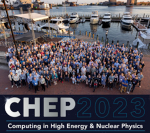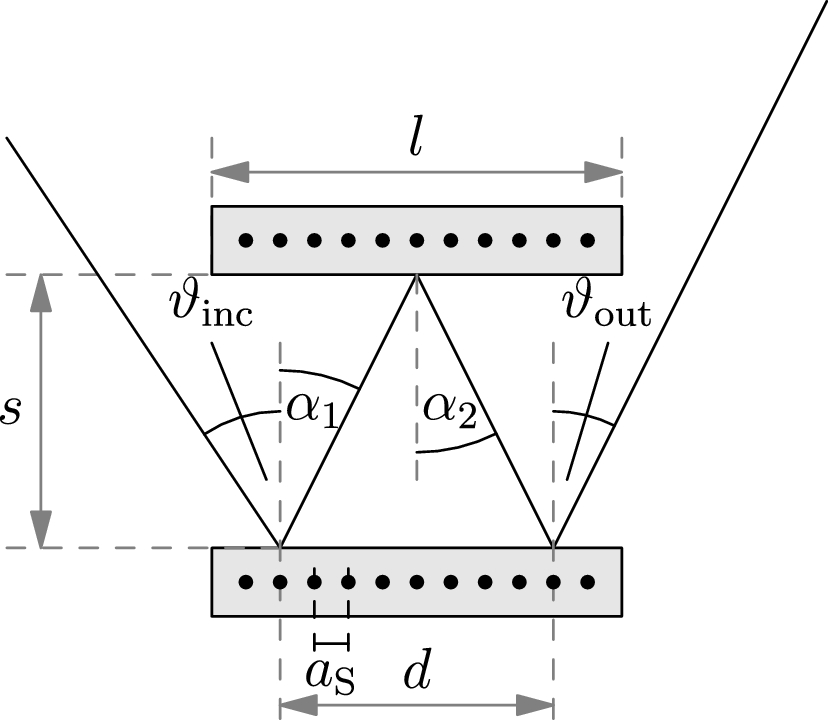News
EPJ Plus expands and refines scope of geophysics section to become Earth System Physics
- Details
- Published on 07 June 2024

EPJ Plus has both expanded and refined the scope of its geophysics section to become Earth System Physics, which is encompassing all topics and methodologies that view the rapidly growing field of Earth System Science through the lens of physics. The aim is to offer a platform for discussing fresh perspectives and understanding of the dynamics and scales connecting geosphere, hydrosphere, atmosphere, and biosphere and the forming of environments and climates. At the same time the new scope wishes to recognize and foster the transformative potential of deep learning in the field - the connections between data scientists and geoscientist are still developing, and physically-informed AI represents not just an evolution in methodology but a paradigm shift in how to conceptualize and engage with Earth System Science.
For more information please read the Editorial by Antonio Navarra, the Managing Editor of this section.
EPJ PV Highlight - Prioritizing Circular Economy strategies for sustainable PV deployment at the TW scale
- Details
- Published on 07 June 2024

Prioritizing Circular Economy strategies for sustainable PV deployment at the TW scale
The material demand and eventual end of life management associated with multi-TW scale photovoltaic (PV) deployment has elicited significant consternation in research communities and the public discourse. Circular Economy and it's associated R-Actions (Reduce, Reuse, Recycle) have been proposed to mitigate end of life management and material sourcing concerns. However, Circular Economy studies and metrics typically focus on a single product scale, heavily emphasize recycling, and only consider mass, excluding energy flows – a major oversight for an energy generating technology. Leveraging the open-source PV in Circular Economy (PV ICE) tool, the article quantifies the mass and energy implications of different R-Actions and proposed sustainable PV module designs in the context of achieving energy transition deployment goals (75 TW in 2050, 86 TW in 2100). Specifically, 13 technology-based module scenarios are established varying module efficiency, lifetime, and material circularity. These 13 module scenarios are evaluated across 6 metrics; total deployment including replacements, virgin material demand, lifecycle wastes, energy demands, net energy generated, and energy balance.
EPJ B Topical review - Twenty-five years of random asset exchange modeling
- Details
- Published on 05 June 2024

Over the last twenty-five years, there has emerged within the subfield of econophysics a sizeable and important literature (hereinafter the “random asset exchange” literature) concerned with the application of stochastic processes to model wealth and income distributions. In a new Topical Review published in EPJ B, written by Max Greenberg (University of Massachusetts Amherst, USA) and H. Oliver Gao (Cornell University, USA), the random asset exchange literature as a whole is comprehensively exposited for the first time.
EPJ E Highlight - Investigating collective motions in schools of zebrafish
- Details
- Published on 27 May 2024

Observations reveal new insights into the evolution of collective motions within schools of zebrafish, and how their complexity and structure vary with density.
Active systems display a wide range of complex and fascinating behaviours, many of which are not yet fully understood. Found on scales ranging from microbes and self-propelling particles to large groups of fish, birds, and mammals, they are made up of many individual parts, which each convert energy from their surroundings into motion.
Through new analysis published in EPJ E, Antonio Romaguera and collaborators at the Rural Federal University of Pernambuco, Brazil, have gained deeper insights into the collective motions of schools of zebrafish: active systems in which multiple fish can collectively move in the same direction. The team’s discoveries could help researchers to better understand the unique properties of active matter, and how complex behaviours emerge and evolve on different scales.
EPJ E Highlight - Modelling vibration patterns in granular materials
- Details
- Published on 24 May 2024

The ‘Laguerre ensemble’ statistical model can better describe the vibrational patterns of granular materials at a critical point of transition in their behaviour.
Granular materials are collections of solid particles which can behave in similar ways to both solids and liquids via interactions between grains. Previously, researchers have explored how the behaviours of these materials can be described in the language of statistical mechanics.
Through new research published in EPJ E , Onuttom Narayan at the University of California, together with Harsh Mathur at Case Western Reserve University, show how the characteristic vibrational patterns associated with granular materials at the point where they transition to more solid-like states can be reproduced more accurately. The work could help researchers to gain a deeper understanding of how granular materials behave.
EPJ PV Highlight - Communication on the potential of applied PV in the European Union: Rooftops, reservoirs, roads (R3)
- Details
- Published on 21 May 2024

Communication on the potential of applied PV in the European Union: Rooftops, reservoirs, roads (R3)
‘Communication on the potential of applied PV in the European Union: Rooftops, reservoirs, roads (R3)’ is a study conducted by the European Commission’s Joint Research Centre (JRC) that aims to assess the technical capacity potential of these three photovoltaic (PV) applications. The results were published recently in EPJ Photovoltaics.
Renewable energy technologies, like solar panels, are important for meeting the increasing demand for electricity and helping to combat climate change. The European Union (EU) has set ambitious targets for PV installation, but there are challenges to overcome, including competition for land and potential environmental drawbacks.
Indeed, the EU Solar Energy Strategy has outlined solid plans for PV installation, aiming for 385 GWDC (320 GWAC) by 2025 and 720 GWDC (600 GWAC) by 2030.
While striving to meet these targets, it is crucial to ensure that the adoption of renewable energy sources does not adversely affect the environment and biodiversity, in accordance with EU policies on nature and wildlife conservation.
EPJ H Highlight - Tracing the history of perturbative expansion in quantum field theory
- Details
- Published on 17 May 2024

Contrary to long-standing assumptions, simplified descriptions of quantum systems have played a central role in shaping the foundations of quantum field theory.
Perturbative expansion is a valuable mathematical technique which is widely used to break down descriptions of complex quantum systems into simpler, more manageable parts. Perhaps most importantly, it has enabled the development of quantum field theory (QFT): a theoretical framework which combines principles from classical, quantum, and relativistic physics, and serves as the foundation of the Standard Model of particle physics.
Yet despite its importance in shaping our understanding of the universe, the role of perturbative expansion has often been understated when discussing the mathematical and philosophical foundations of QFT. Through new analysis published in EPJ H: Historical Perspectives on Contemporary Physics, James Fraser at the University of Wuppertal, together with Kasia Rejzner at the University of York, bring the special status of perturbative expansions into sharper focus, by highlighting their deep-rooted relationship with the foundations of QFT.
EPJ Web of Conferences Highlight - CHEP2023: Computing in High Energy and Nuclear Physics
- Details
- Published on 15 May 2024

The 26th International Conference on Computing in High Energy and Nuclear Physics (CHEP), organized by Jefferson Lab, took place in Norfolk, Virginia, from 5–11 May 2023. The conference hosted roughly 600 registered participants from 28 different countries.
The CHEP conference series began in 1985 and has grown to become the largest of its kind, providing the unique opportunity for computing experts across particle and nuclear physics to come together and learn from each other.
EPJ D Highlight - A new simple scheme for atom interferometry
- Details
- Published on 13 May 2024

New scheme proposes a simpler method for investigating matter waves with an ease of use that could make it ideal for commercial applications
Atom interferometers are devices that use the wave characteristics of matter to measure the phase between atomic matter waves to separate paths to make high-precision measurements of elements of physics, such as gravitational and magnetic fields. Atom interferometers have also found their way into industry and are used in geological surveys, mineral exploration, environmental monitoring, and for the development of precision atomic clocks.
Atom interferometers usually control matter waves and particularly particle velocity using lasers. Thus, the growth of atom interferometer application has been strongly tied to the development of advanced laser systems, with many current models based on the construction of gratings fashioned from laser beams. That means that an issue with these systems is the fact that they depend on the efficient operation of intricate laser systems. Additionally, while this method has achieved commendable precision, it fails slightly when considering shorter wavelengths.
EPJ B Highlight - A Mathematical Understanding of Project Schedules
- Details
- Published on 13 May 2024

Complex projects are made up of many activities, the duration of which vary according to a power law; this model can be used to predict overall project duration and delay.
We have all been frustrated when a project is delayed because one sub-task cannot begin before another ends. It is less well known that the process of scheduling projects efficiently can be described in mathematical terms. Now, Alexei Vazquez, of technology company Nodes & Links and based in Cambridge, UK, has shown that the distribution of activity lengths in a project follows the mathematical relationship of power law scaling. He has published his findings in the journal EPJ B.





